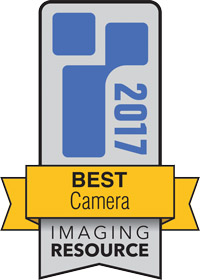Camera of the Year 2017: Best Overall!
posted Friday, January 5, 2018 at 3:02 PM EDT
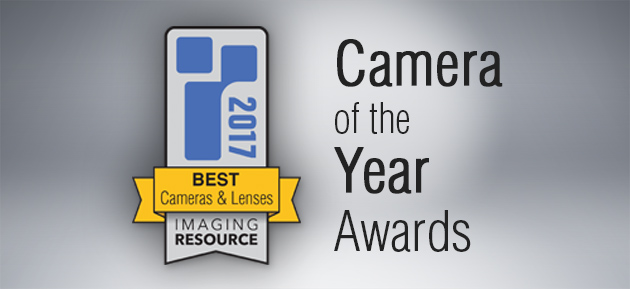
After another year in the test lab and out in the field, it's finally time to crown our grand champion Best Overall Camera for 2017, so without further ado, we present our choice for the absolute cream of the crop, with a venerable and stately powerhouse:
Camera of the Year, Best Overall - Nikon D850
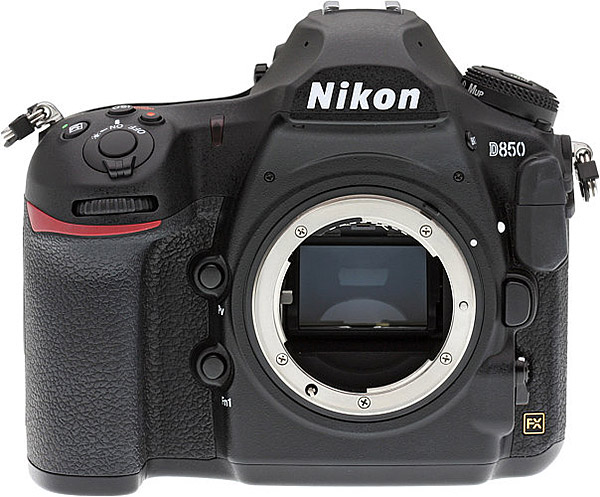
This was by far the toughest Camera of the Year decision we've ever faced. The Nikon D850 and Sony A7R III are both extremely strong cameras, with slightly different emphases that will appeal to different groups of people. Most years, one camera stands out clearly against the rest of the field, but this time around, we had divided opinions, even within the ranks of IR. Ultimately, a lot comes down to the types of photography a user might be interested in, and the conditions they'd be likely to shoot in. Both cameras have very strong points, but in the end we felt that the Nikon D850 deserved the crown of Best Overall. It's blazingly fast, has great image quality, excellent ergonomics, shoots full-frame 4K video (with clean 4:2:2 output via its HDMI port) and can stand up to adverse shooting conditions better than we ourselves can. In our book, all those added up to it being our ultimate choice for our 2017 Camera of the Year.
Let's take a look at some of what went into our decision.
Shooting speed: Strong Advantage Nikon
This may seem like an odd call, given that the Sony handily wins when it comes to out-of-the-box continuous-mode frame rate. It can rattle off 10 fps bursts, while the D850 seems relatively plodding, at "only" 7fps. The D850 is capable of a nearly-indistinguishable 9 fps but requires the addition of a $400 battery grip to do so.
On the face of it, it seems that the A7RIII is the faster camera, but the (huge) difference comes when you look at buffer clearing times, and how many shots you can actually take over the span of several minutes.
The enormous advantage with the D850 lies with its support of the super-fast XQD memory card format. (Oddly, while Sony was one of the founding companies of the XQD format, they haven't chosen to use it in any of their still cameras, even very high-performance ones like the A9 and A7R III.) XQD cards are a lot more expensive than SD cards, but they leave even the fastest SD cards in the dust when it comes to write speeds. (Note, though, that a lot also depends on how efficiently a camera is communicating with the card; just because a card is capable of writing at ~300 MBps doesn't mean a particular camera will be able to hit that rate.)
While it's "only" shooting at 7fps out-of-the-box, the D850 has a seriously deep buffer, and clears it unbelievably quickly. With the optional battery grip, it shoots 90% as fast as the A7R III, and yet still clears its huge buffer much more quickly.
Here are some numbers from our performance testing:
| Image Format | Burst Rate | Buffer | Clearing Times | Total Shots/Minute | |
| Nikon D850 | Continuous Hi: Large/Fine JPEG | 7.12 fps | 200 frames | 1.2 seconds | 410 |
| Nikon D850 + Grip | Continuous Hi: Large/Fine JPEG | 9.18 fps | 55 frames | 4.4 seconds | 330 |
| Sony A7R III |
Continuous Hi+ Large/Extra Fine JPEG |
9.9 fps | 82 frames | 57 seconds | 146 |
The A7R III clears its buffer much faster than the earlier A9, and doesn't cripple the camera nearly as much while it's writing to the card, but the D850 simply blows it away when it comes to total shots over time. Even given the difference between the out-of-the-box 7fps and 10fps speeds, we'd take the lightning-quick buffer clearing of the D850 any day, especially when it comes to shooting something like sports. In almost any real-world scenario, with a big XQD card in the D850, you just don't have to worry about running out of buffer capacity. Ever. When you can shoot hundreds or more images, and only have to wait a few seconds before you can rattle off loads more, buffer capacity simply ceases to be an issue. The almost full minute required for the A7R III to clear is almost crippling in comparison for serious sports or wildlife shooting. Looking at total shots per minute, the out-of-the-box D850 clocks in at an astonishing 410 large/fine JPEG frames. Considering that those are 42-megapixel images, it's little short of amazing.
High-ISO JPEG/RAW image quality: Tie
When it comes to in-camera JPEG image processing at default settings, the A7R III takes a slightly more aggressive approach, showing more sharpness yet a bit more apparent noise. On the other hand, the D850 is more subtle with its default in-camera processing. The D850 still produces JPEGs with excellent fine detail, but the Nikon displays less noise reduction. Of course, for those that need JPEGs straight-from-camera, as sports photographers often do, for example, the JPEG processing parameters can be adjusted to taste in either camera.
For the RAWs, however, both the A7R III and D850 are remarkably similar. At higher ISOs, both cameras are absolutely fantastic, and to our eyes, the RAW files are more or less identical, making it really hard to call it one way or the other in this sub-category. It's a tie for both cameras in overall image quality!
Ergonomics: Significant advantage Nikon
This is an area where your use case will affect how you feel about these two cameras. The A7R III is much smaller, more compact, and lighter than the D850. This can be a decided advantage when used with smaller lenses. When you attach something like a 70-200mm f/2.8 lens, though, the D850's more substantial grip makes a huge difference. It doesn't take long with an even moderately large lens to really feel the difference the D850's grip makes. Even something like a large-aperture ~100mm portrait lens can get pretty tiring to heft when dealing with a smaller camera body. And with a typical 70-200mm f/2.8 "sports" lens, the D850 provides excellent balance while the A7R III feels a bit "cramped" for the fingers between the lens and grip.
Given the cameras' price points, we think it likely that many prospective owners are likely to be using them with substantial lenses, so we gave some weight (no pun intended) to this consideration. On the other hand, if you're looking for a full-frame body to use for street photography, the A7R III is a near-perfect option, particularly given how well its autofocus works in its completely-silent electronic shutter mode.
Video: Advantage Sony
The D850 produces flat-out great-looking 4K and FHD video, using the full width of its 35mm sensor for "no crop" 4K video. Its video image quality is excellent, some of the best we've seen from a DSLR, and its "flat" video profile does a decent simulation of Log video tonality. The A7R III goes a good bit further in its video capabilities, though, with true S-Log3 gamma, and able to record 10-bit video data. One of the biggest video advantages, however, is with the A7R III's excellent autofocus. The D850, like other Nikon DSLRs, still uses a contrast-detect AF system for its live view and video modes, which results in overall sluggish AF with visible wobbling and hunting. For manual focus, the D850 is fine choice for video, but the A7R III comes out on top for pure versatility.
Continous AF: A tie; Eye-detection AF: Advantage Sony
In our continuous autofocus tests with moving subjects, the D850 and A7R III performed surprisingly similarly, a real achievement for Sony, given how good the Nikon AF system in the D850 is. (The same AF engine as in the D500 and D5.) Thanks to its integration of image and PDAF sensor data, though, the A7R III, like the A7R II before it, sports an eye-detecting AF mode. With the Mark III, Sony's really improved the performance of this focus mode, and we found that Eye AF is remarkably fast and effective when shooting human subjects.
Image Stabilization: Advantage Sony
Nikon's recent VR-equipped (Vibration Reduction) lenses are some of the best on the market, but the A7R III has image stabilization built into its body, using sensor movement to help compensate for camera shake. (In-Body Image Stabilization, commonly abbreviated as IBIS.) This essentially makes every lens into an IS lens, but it should be noted that IBIS isn't as able to compensate for camera shake at longer focal lengths as optical IS systems are. It's certainly a very worthwhile feature though, and one that the A7R III has over the D850.
Ruggedness and weather-sealing: Strong advantage Nikon
Given such excellent and well-matched opponents, ruggedness and weather-sealing was the Sony's Achilles Heel in this competition. We'll be publishing a full story on our weather testing and its results shortly, but in a weatherproofing shootout against not only the D850 but the Canon 5D Mark IV and Olympus E-M1 II as well, the A7R III came up woefully short. With all four cameras subjected to the same simulated-rain torture test, the A7R III was the only one that not only leaked significantly but was also completely disabled by water ingress, to the point of water getting into the shutter mechanism itself. (It did eventually return to full functioning after the test, but required two days of drying-out in gentlem dry warmth to do so.)
The D850 didn't escape completely unscathed, as we found a large drop of water inside the viewfinder after our more challenging "rainstorm" test, right behind the rear element. It didn't seem to cause any operational problem with the camera, though, and the water was easily dealt with by unscrewing the rear viewfinder eyepiece and dabbing with a towel. This occurred with the stock hot shoe cover in place; a subsequent test with the rubbery BS-3 accessory cover (standard equipment on the D5) showed no water ingress whatever. (For the record, we highly recommend the BS-3, despite the $29.95 cost for a part that probably costs under a dollar to make.)
There's unfortunately no camera-industry standard for weather resistance, so we had no standard to test to. We tried to simulate two conditions, a strong but brief (15 minutes) rainstorm, and an equally-brief heavy mist. As we'll discuss in the soon-to-come article describing the details, there were a number of ways that the test didn't match real-world weather conditions, but it was at least close, and the key thing was that all four cameras were exposed to substantially the same conditions. Unfortunately, only the A7R III had significant problems as a result.
For many advanced amateur and even professional shooters, weather sealing is a non-issue. The A7R III will almost certainly be fine in a light drizzle, or if you're careful to keep it protected with some sort of a rain shield in heavier precipitation. We're talking about a $3,000-plus pro-grade camera body, though, and Sony needs to up their weather-sealing game if they want to seriously compete at this level. The other three models in the test proved they can take substantial punishment from the elements and keep on firing, and that's what professionals and enthusiasts need in the challenging conditions that many face.
If you don't need cloudburst-resistance, all the features described earlier are powerful arguments in favor of the A7R III, and many photographers will be very happy owning them. (As would a number of us here at IR). When it came to the difficult decision of what camera most deserved to be named Camera of the Year, though, the D850's superior ruggedness and weather sealing was the final deciding factor, and the differing results from our weather ruggedness testing were substantial.
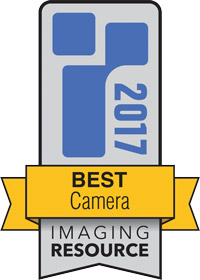
Conclusion
So there you have it, camera fans: Thanks to its excellent image quality, amazing speed, excellent ergonomics, and weather-sealed ruggedness, the Nikon D850 is our 2017 Camera of the Year. By almost any measure, we have to say it's the best SLR we've seen to date at any price. Nikon has indeed achieved a major victory with the Nikon D850, a superbly designed and ruggedly built camera for professionals and enthusiasts alike. For shooting landscapes, portraits, sports, wildlife, and virtually any other challenging subject matter one wishes to shoot, the Nikon D850 and its well-stocked lens eco-system is equipped to handle the job.
Buy Now: B&H | Amazon | Adorama
Camera of Distinction, Best Overall - Sony A7R III
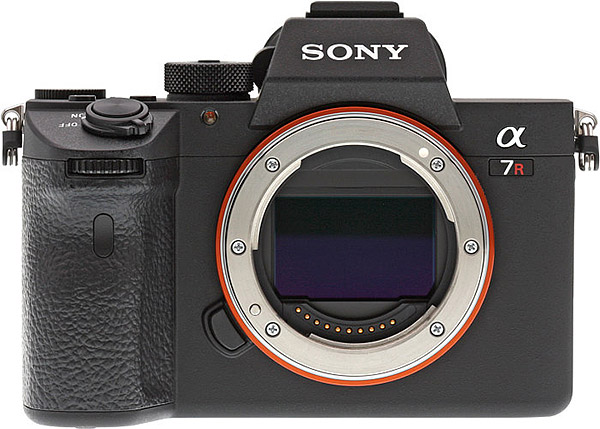
The Sony A7R III is a real triumph of full-frame mirrorless technology. While the A9 proved that mirrorless would be able to stand up to the focusing demands of the modern professional, the A7R III proved that a more complete, flagship-level camera could exist with nearly all the features a wide breadth of photographers would demand of it. With a dramatically improved battery and heat distribution, an autofocus system that puts it on par with nearly any other camera ever made, a sensor capable of capturing vibrant colors spanning impressive dynamic range, and in-body image stabilization crammed into a small, compact and lightweight body, the A7R III checks nearly every box and succeeds in nearly all environments.
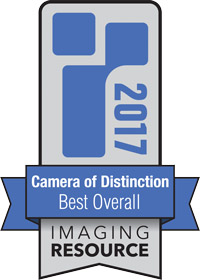
But the constant issue of dust on sensor management and its underwhelming weather sealing makes the A7R III just a hair short of perfect when compared to the market. It's an absolutely spectacular camera, but falls short in the rugged department. For those who aren't planning on shooting uncovered in a rainstorm, capturing the mist under a waterfall, or shooting in the blinding dust of a sandstorm, the A7R III will likely never let you down. Unfortunately, there are shooting situations where water and dirt are unavoidable, and it's there that the A7R III comes just short of hitting the sweet spot.
Look, not everyone is going to demand weather sealing out of their camera, and for those folks the choice in what body is the best is a much tighter conundrum. The A7R III is such a fabulous camera for both still and video shooting that it's very easy to forgive its penchant for dust attraction and lack of weather sealing. For some, the focusing engine, image quality, frames per second, video quality (and options) and excellent Sony lenses, will all vastly outweigh the few downsides the A7R III has. Sony achieved a monumental success with the A7R III, and that should not be overlooked. This is a sparkling tour de force of a camera that proves how deadly serious Sony is about the imaging market, and paints an extremely optimistic picture of the future of mirrorless.
Buy Now: B&H | Amazon | Adorama
Camera of Distinction, Best Overall - Fujifilm GFX 50S
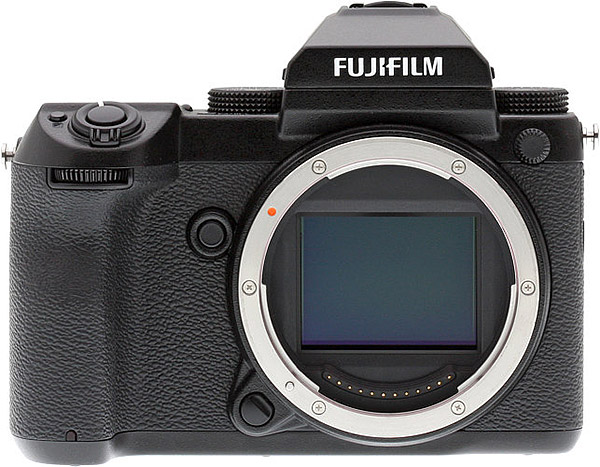
While a camera is a lot more than its sensor and megapixel count, when you are looking for the ultimate in image quality, very few cameras released in 2017 can compete with the 50-megapixel medium format mirrorless Fujifilm GFX 50S. Fujifilm's first foray into digital medium format cameras blew us away from our very first lab shots. The sensor delivers incredible detail, dynamic range in RAW files and impressive high ISO performance. In fact, the GFX delivered excellent 30 x 40 inch prints all the way up to ISO 3200 in our Print Quality Analysis testing and set a new high ISO benchmark by delivering a good 8 x 10 inch print at ISO 51,200.

For those who think that image quality trumps all else, the GFX may very well be their personal Camera of the Year. For us at Imaging Resource, a camera needs more versatility to be the very best, but the GFX has certainly earned its "Distinction" award by virtue of its excellent image quality and good design and handling. The GFX is no speed demon, but for photographers who don't mind slowing down and putting in the time, the GFX will reward them with remarkably detailed images which even the best full-frame cameras cannot match.
Buy Now: B&H | Amazon | Adorama
• • •
Imaging Resource Camera of the Year Awards 2017
Best Professional & High-End Cameras
Best Enthusiast & Premium Compact Cameras
Best Intermediate & Entry-Level Cameras
Best Overall (current page)
